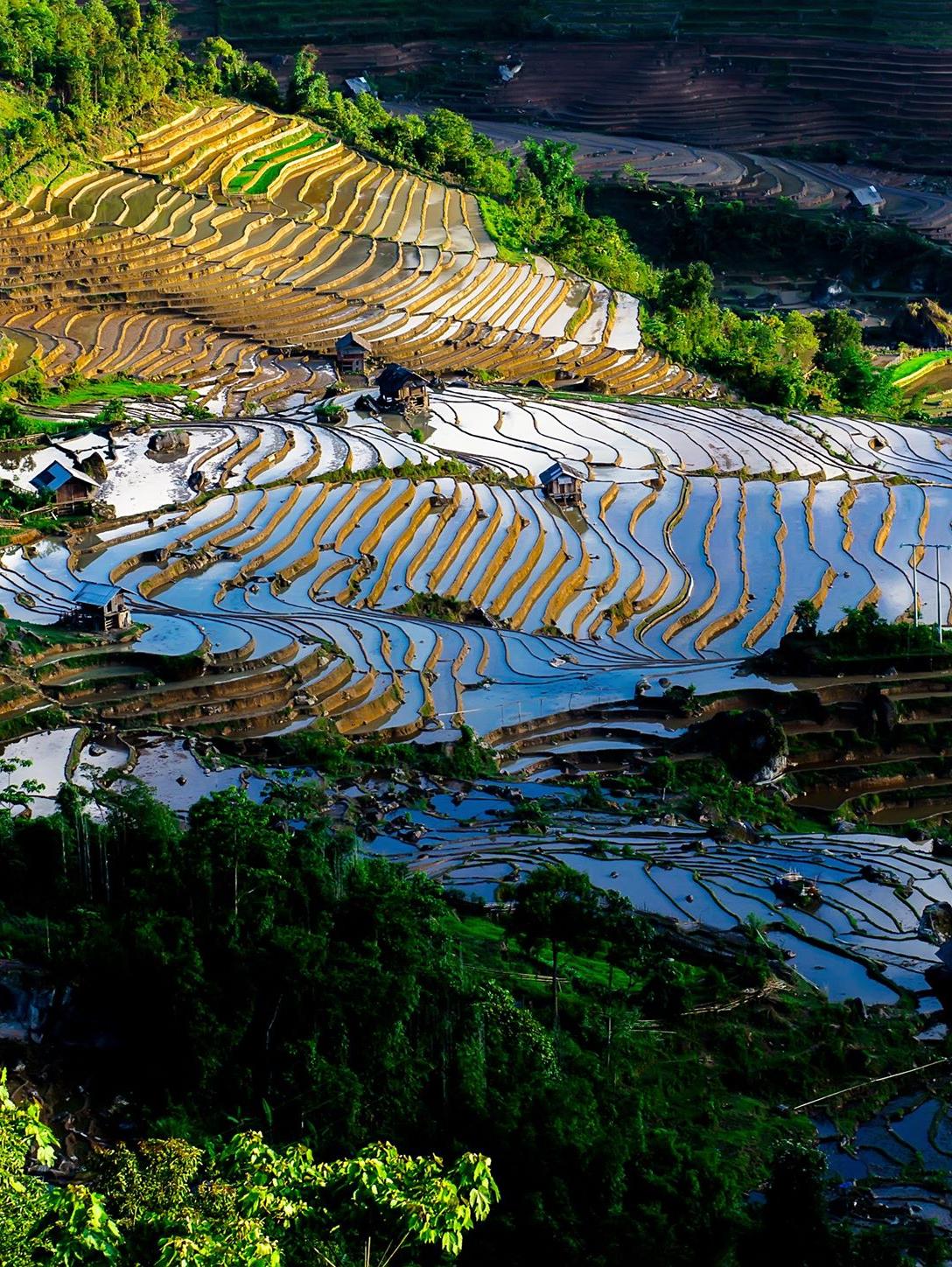Every summer, people in the villages of the Northwest come together to build dams, build banks, weed, and lead water. The water flows from one level to another, reflecting the colors of the sky and creating a wonder unique to the Northwest.
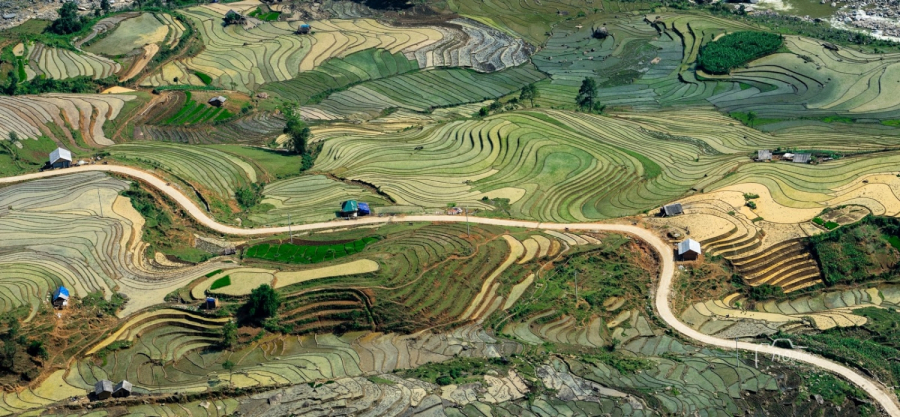

Perhaps, no artist can mix colors as vividly, naturally and full of life as these farmers in the Northwest. It is these small bodies and skinny hands that have contributed to creating colorful patches of water-falling season, as beautiful as a giant painting in the middle of the vast Vietnamese forest.
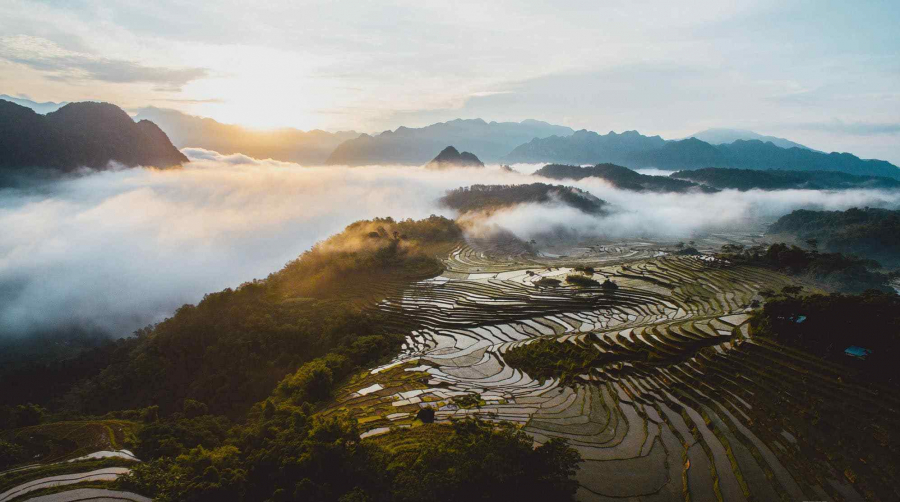
Unlike the fields in the alluvial plains of the delta, the fields in the Northwest highlands are stacked layer upon layer like steps reaching up to the blue sky. The steps sparkle like pieces of mirror under the sky, some are red and yellow with heavy alluvium, some are dyed green by newly sown rice, and some reflect the blue sky and earth.
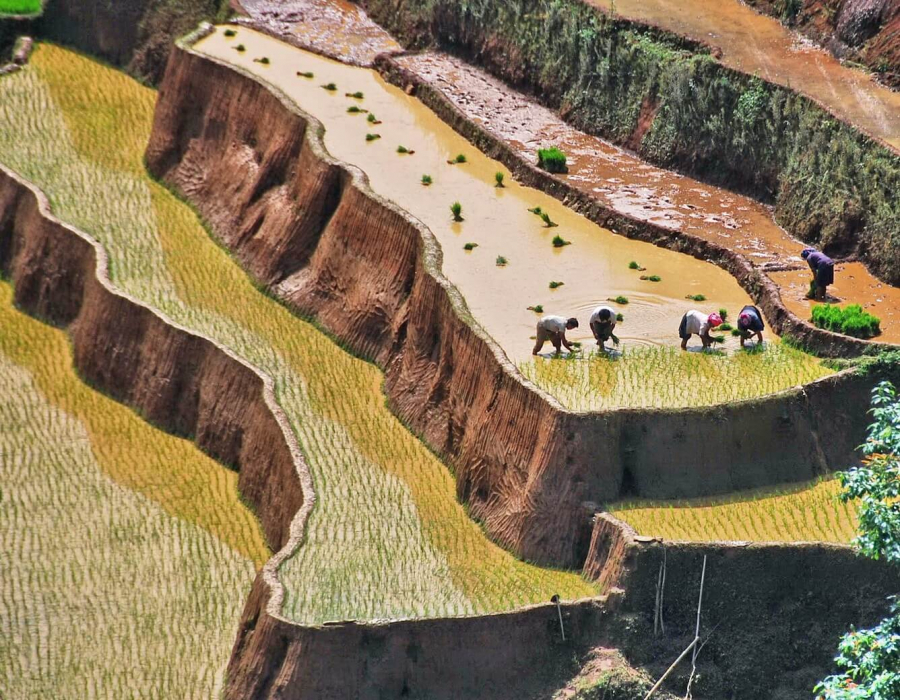
It is those small bodies and skinny hands that contribute to creating the colorful patches of the flood season.
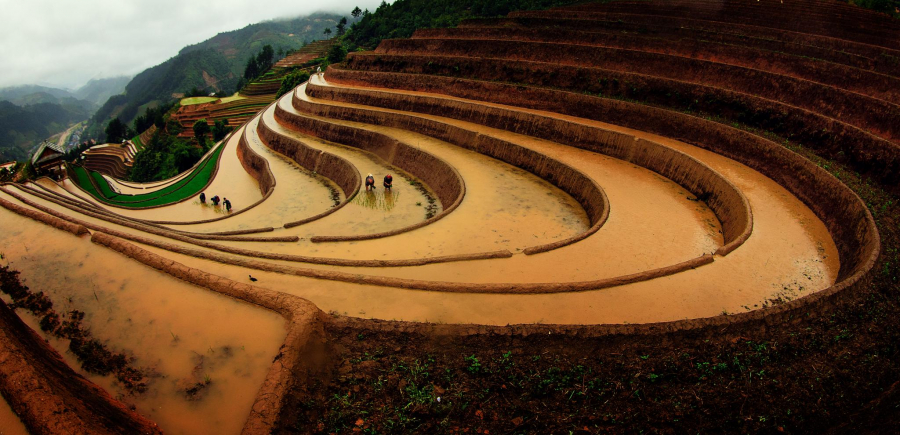
The Northwest in the pouring water season, also known as the pouring season, is one of the unique tourism products of the Northern mountainous region, attracting domestic and foreign tourists to visit. Because of the unique characteristics of terraced fields, which are steep hills and winding terrain, mainly taking advantage of rainwater, the work of bringing water to the fields in the Northwest is an art that requires skillful, talented and diligent hands.
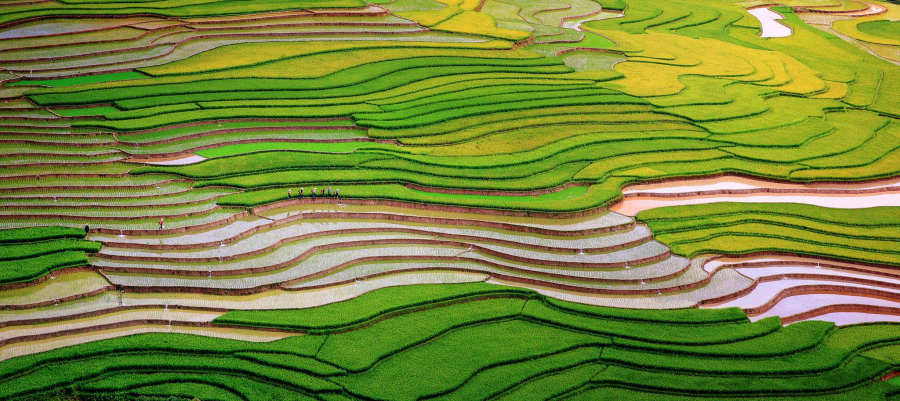
The rice fields in the Northwest highlands are stacked layer upon layer like stairs reaching up to the blue sky.
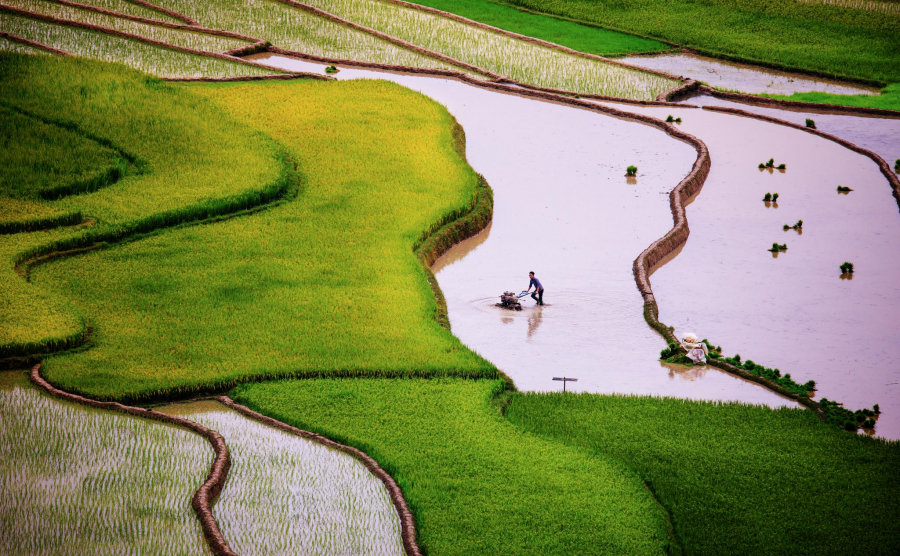
The highlands only grow one crop a year and when the first rains of summer fall, it is also the time for ethnic people to bring water to the fields. The Northwest usually floods around May - June, after flooding, they let water soak the soil, the water flows down from the ravines, through bamboo pipes, flooding the fields of the Northwest. Although the work of clearing the land and bringing water to the terraced fields here is still difficult, it is the beginning of a bumper crop.
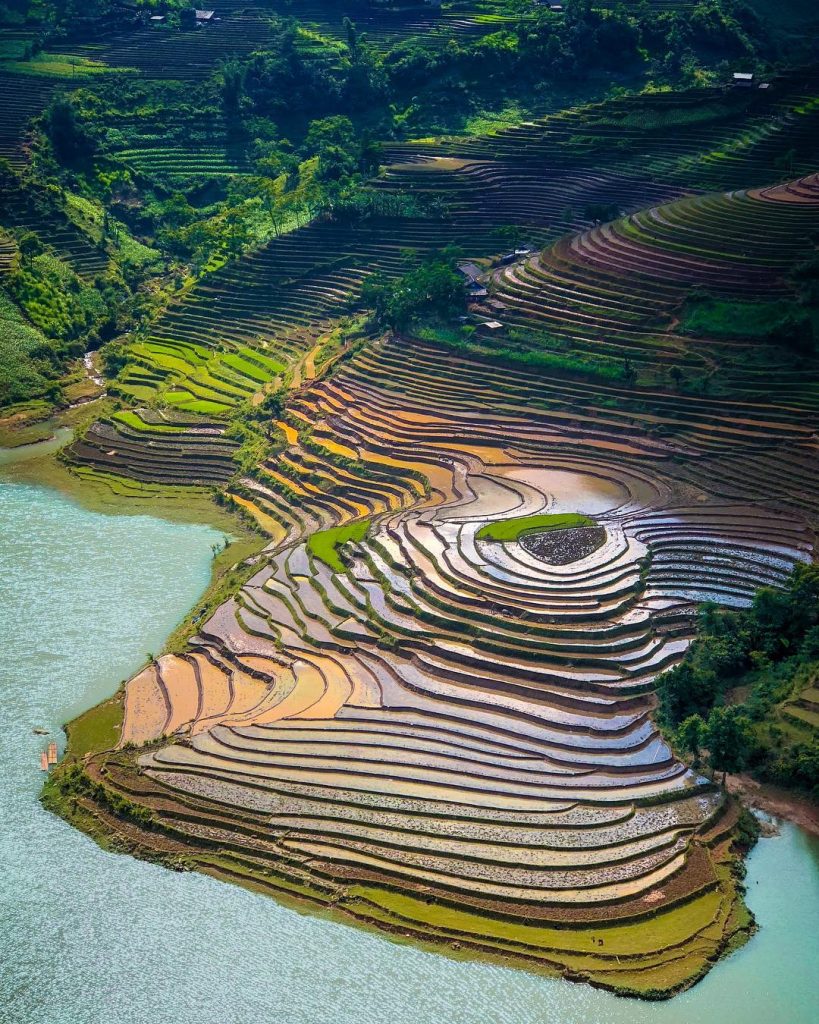
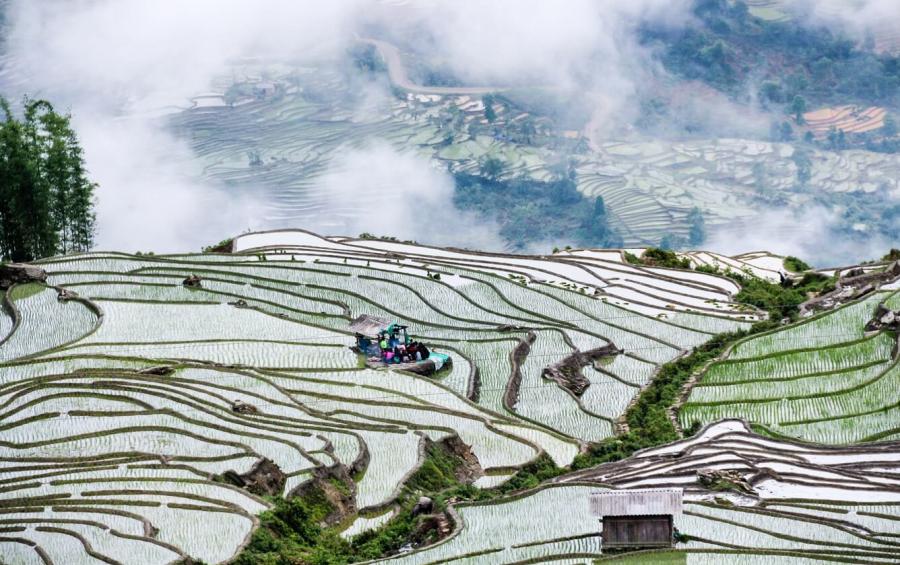
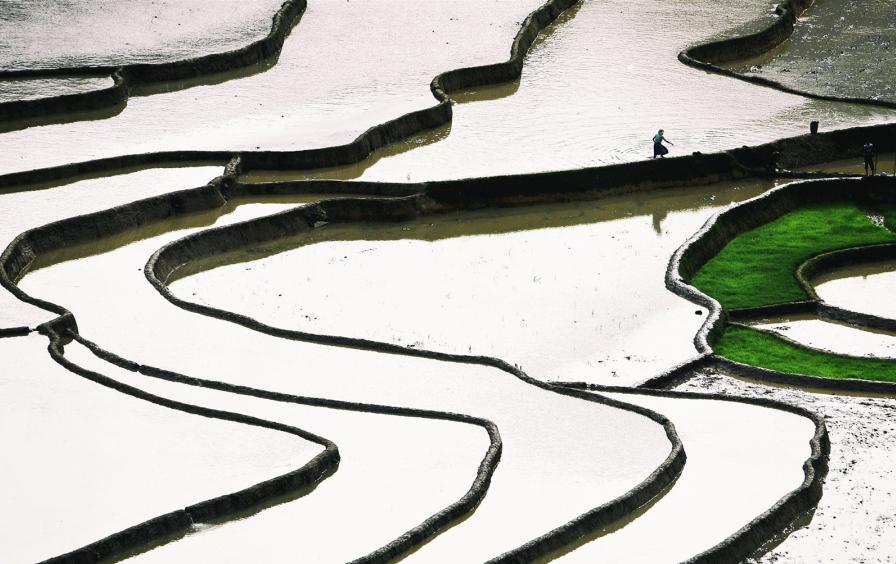
When enough water is brought in, the Mong and Giay people continue to sow seeds. A few days later, green fields as far as the eye can see begin to appear, so they drain the water to let the rice germinate. And when those young shoots rise above the water, people bring water back to the fields to let the seedlings grow a little more, preparing for the planting season that will be flooded in July.
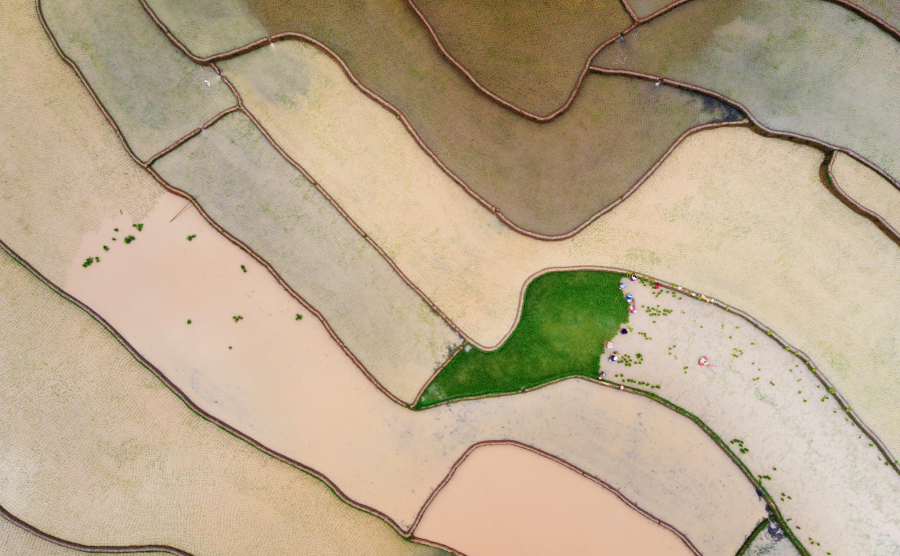
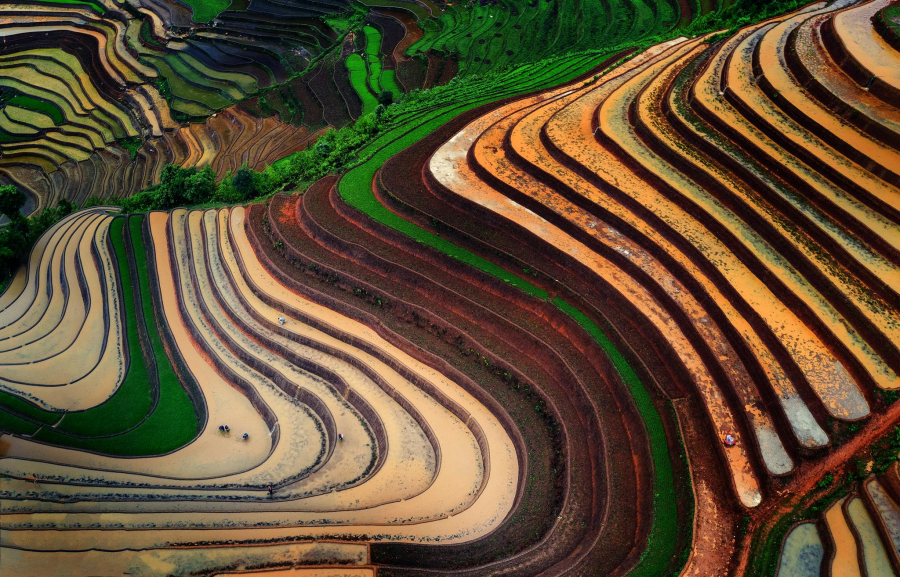
Not as colorful and splendid as autumn with its brilliant golden color of sunlight and ripe rice, but terraced fields in the flooding season have a warm color tone, a wild and rustic look like the Northwest land itself.
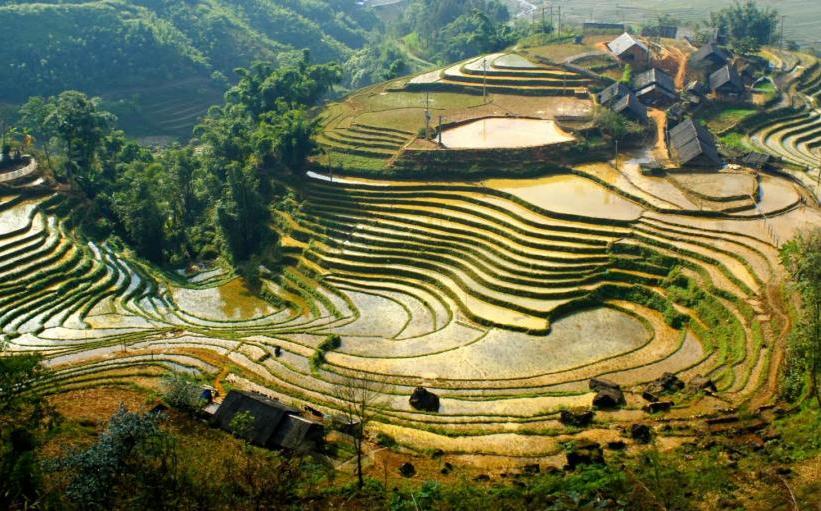
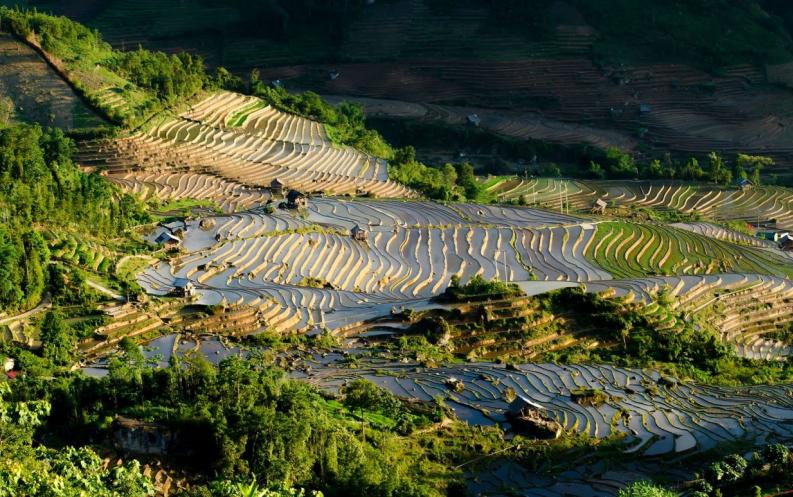
How many breathtakingly beautiful scenes stretch along the Northwest mountainsides during the flood season. Vast fields of water intertwine with young, green rice seedlings. Then day and night, the sun and moon alternate as if silver-plating each layer of water, making the Northwest fields even more beautiful with their bright and dark tones.
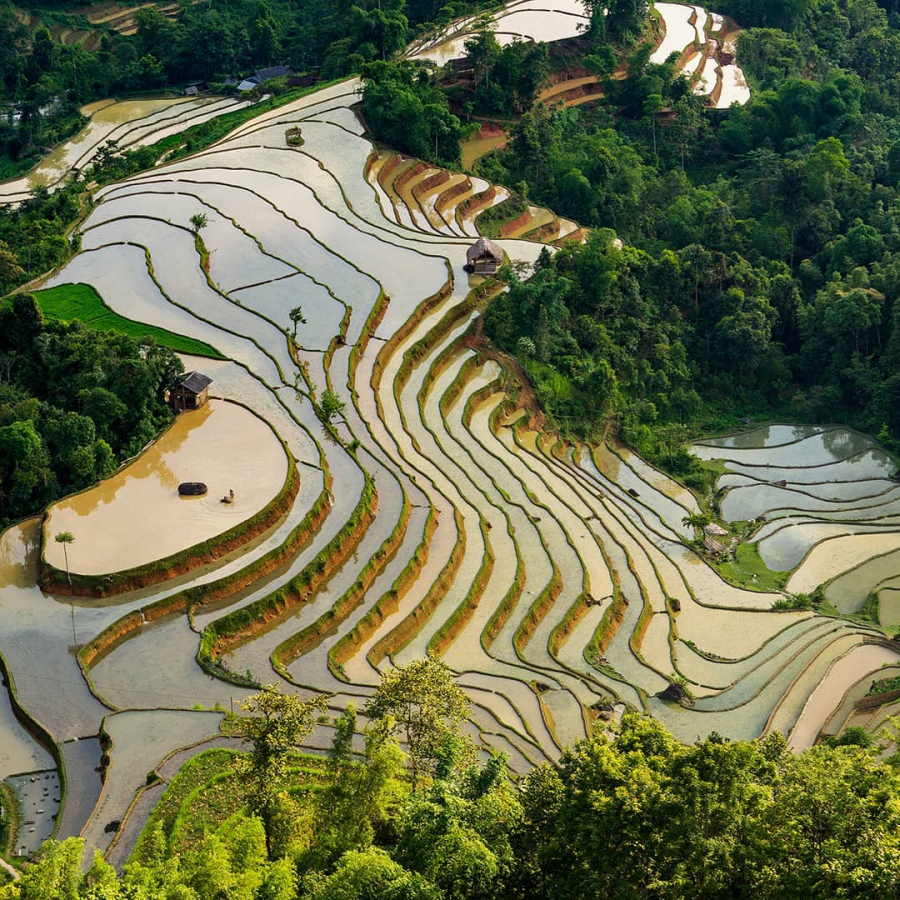
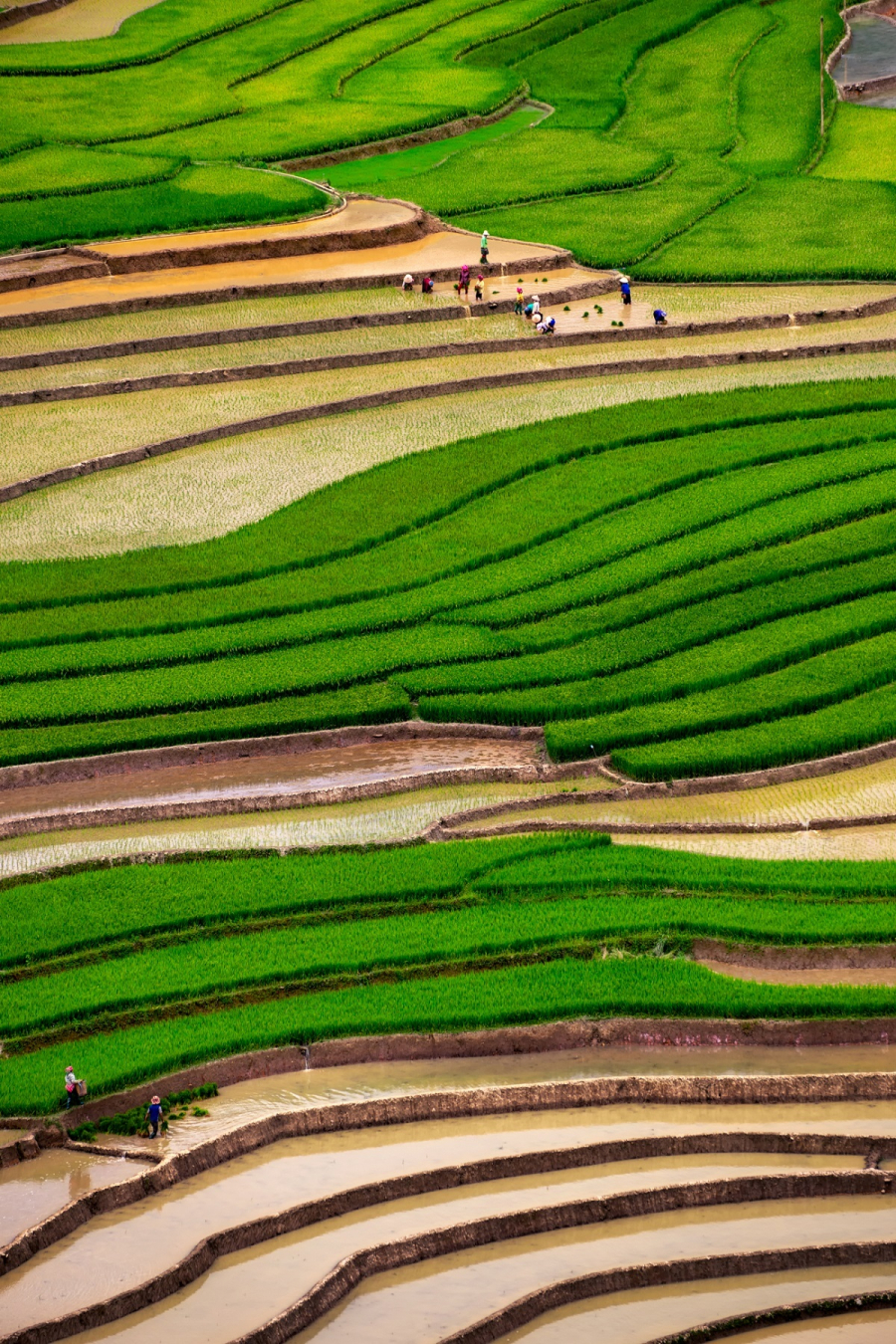
The most beautiful destinations to see terraced fields in the flooding season in the Northwest
Bat Xat: During the flood season, Bat Xat's landscape is filled with countless rice fields glistening with water in the communes of Ngai Thau, Den Sang, Y Ty, A Lu, and Khu Chu Lin.
Sapa: Always the first choice of foreign tourists when visiting the Northwest because of its convenience and ease of travel. The most beautiful terraced fields in the flooding season are in the villages: Ta Van, Ta Phin, Hau Thao, Trung Chai, Lao Chai.
Hoang Su Phi: As a mountainous border district of Ha Giang province, the beauty of terraced fields in Hoang Su Phi has been recognized by the state as one of the national relics in the Northwest.
Mu Cang Chai: La Pan Tan and Che Cu Nha are two communes with the most beautiful rice fields in Mu Cang Chai. No one can pass by without stopping to admire the masterpieces of the H'Mong people shining brightly under the Northwestern sky.
Tu Le: Is a terraced valley located between three high mountains Khau Pha, Khau Than and Khau Song in the Northwest.





